Independent Hardtops 1949-1964
18998
18998
Independent Convertibles 40-54
Station Wagons the Independents
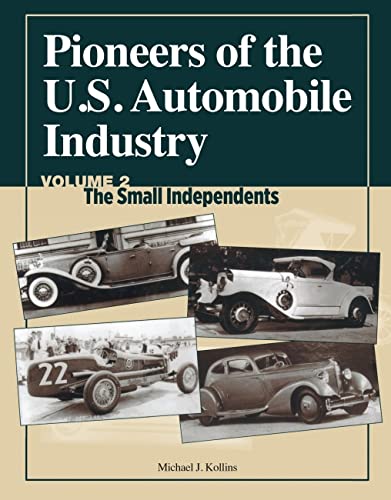
Pioneers of the U.S. Automobile Industry uses four separate volumes to explore the essential components that helped build the American automobile industry – the people, the companies and the designs. This volume uses more than 450 photos to help weave the story of the risk-takers who helped shape the automotive industry from the very beginning.
Pioneers and companies covered in this edition include:
Charles and Frank Duryea Studebaker The Pratt Family and the Elcar Motor Care Company Joseph Moon Russell Gardner Louis Clarke George Pierce and Charles Clifton Packard/Joy/Macauley and the Packard Motor Car Company Edwin Thomas Ransom Olds Peerless Fred and August Duesenberg Kissel Brothers Hupp/Drake/Hastings/Young and the Hupp Motor Car Corporation Walter Flanders Chapin/Coffin/Bezner/Jackson/Hudson/McAneeny and The Hudson Motor Car Company Harry Stutz Harry Ford Graham Brothers Charles Nash
American Independent Automaker
Storied Independent Automakers
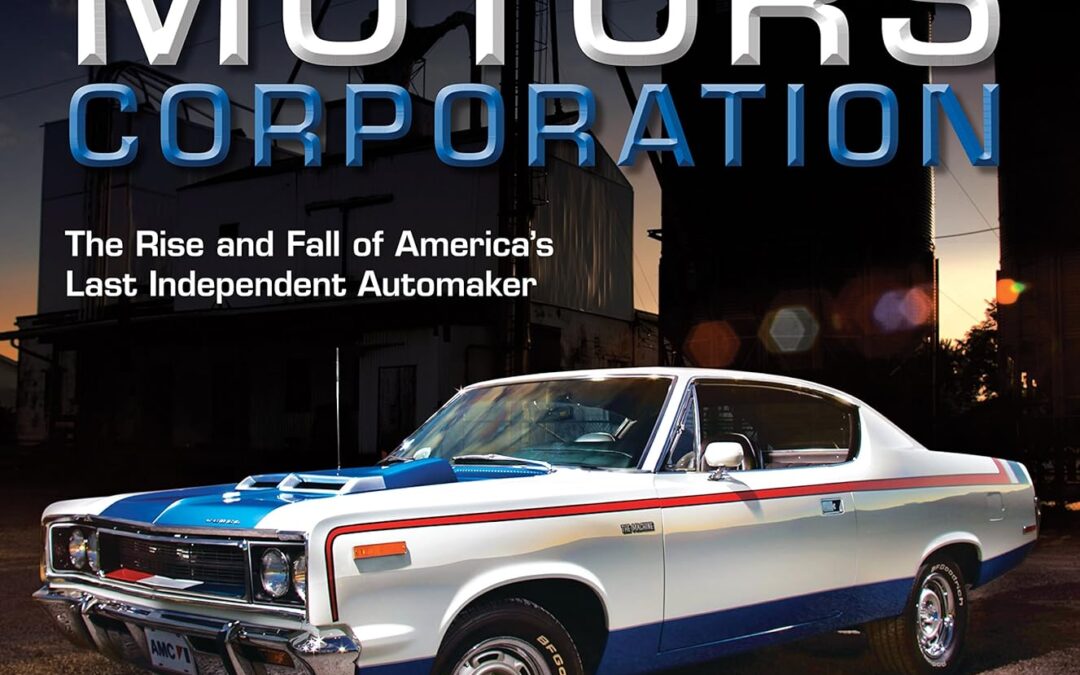

Updated from its previous format to include the later 3.2 Litre models through 1989. This Floyd Clymer publication includes complete technical data, service and maintenance information and comprehensive detailed instructions for the repair and overhaul of all major and minor mechanical and electrical components for the 1973 to 1989 Porsche 911G Series, 2.7, 3.0 and the 3.2 Litre models.
In its original format, this manual covered the Porsche 911 models through the 1978 model year. However, additional information for the earlier 2.7 and 3.0 Litre models that was not available at the time the original manual was published, is now included or appended to each chapter in this revised publication.
While this manual focuses on the 1973-1989 G series 911, much of the information is also applicable to the earlier 2.4 Litre (1971-73) models destined for the U.S.A., Australia, Japan and Canada that, due to emission requirements, were fitted with Bosch mechanical fuel injection (FIP). Consequently, this manual will also be of interest to owners of those 2.4 litre fuel injected models.
The manual is broken down into the following sections: Engine, Fuel System including Bosch mechanical fuel injection (FIP) continuous injection (CIS) and digital fuel injection (DME). Ignition Systems including Capacitive Discharge CDS, CDI and DME, Cooling, Heating & Exhaust Emission Systems, Clutch, Manual Transmission & Sportomatic Transmission, Rear Suspension & Drive Axles, Front Suspension, Steering, Brakes, Electrical System and Body. There is also an appendix to the rear of the manual that includes Technical Specifications and Wiring Diagrams.
While reprints of the factory manual are readily available, they are relatively expensive and we are pleased to be able to offer this reasonably priced alternative as a service to all 1973-1989 Porsche 911 enthusiasts worldwide.
248 pages, 311 illustrations plus an additional 66 pages of wiring diagrams, size 8.25 x 10.75 inches


The story of a boy with a big four-wheel dream
There are men who fall in love with a dream when they are young and do everything they can to make it come true. Romano Artioli is an entrepreneur pursuing his desire to revive the world’s most prestigious automobile brand, Bugatti. With passion and dedication, he achieves this goal. Born in Mantua, birthplace of Nuvolari, the most famous race car driver of all time, Romano opens his first auto service centre in Bolzano at the age of eighteen, buys a hydraulic test bench and begins overhauling engines, immediately demonstrating great skill.
And he founds dealerships, imports cars and becomes president of the local automobile club. He understands the importance of going all out to meet the demands of his customers, who become his friends and help him sell cars.
He convinces Enzo Ferrari to entrust him with management of the brand not only in the Triveneto, but in southern Germany as well.
After amassing experience for years travelling the world, it’s time for him to make his boyhood dream come true: he charms the French government and arranges for the sale of the Bugatti brand.
Then, having been abruptly prevented from selecting a powerful partner among the many who were interested in developing Bugatti and ensuring its future as an independent brand, he acquires the crisis-ridden Lotus Group and rapidly restores it to its former grandeur.
There, he introduces new models with great success, such as the special Lotus Elise, named after Romano’s young granddaughter.
Exploiting the unique untapped potential of his technicians, who work with passion and total commitment. In the mid-nineties, the Bugatti EB 112 is named “the world’s most beautiful sedan”.
But as in a classic thriller, just when everything seems to have turned out right comes the sneaky and unexpected twist that changes everything. With endless twists and turns and a long line of bankers’ traps, lawyers’ scams and ravenous businessmen, Bugatti & Lotus Thriller tells the story of a great dream of genius and creativity that stirs passion in every petrolhead the world over.

This book is unique. It not only tells you how carburetors work – but more importantly – why.
Carburetors, like many parts of a car, are not stand-alone devices. A carburetor’s “success” is highly dependent on many related components working together, just like the members of a football team must work together in order to win. We will discuss all aspects of the fuel and air systems of a gasoline engine from the gas tank until the air-fuel mixture enters the combustion chamber. To be able to effectively understand, diagnose and repair carburetors, it is important to understand all of these inter-related systems.
This book will complement the various service manuals you have for your cars. Some books have very good, detailed carburetor descriptions, while others are limited in the discussion of how the particular carburetor works. This book is not intended to replace these manuals, but to give you fundamental knowledge that will apply to virtually all carburetor designs. This book also includes more than just carburetor information, since it is the complete fuel, air, ignition and intake manifold systems that are important to fully understand your vehicle.
Over the past several years, I have been studying the Marvel carburetor calibrations on early Buicks and reporting the results in my “Early Buick and McLaughlin-Buick Owners” newsletter. The variation in air–fuel ratio (A/F) I observed on my 1916 and 1929 Buicks led me to do a more detailed analysis of intake manifold designs, which are critical to achieving an optimum carburetor calibration. It is interesting to see how both intake manifold designs and fuel delivery techniques evolved over the last 100 years.
In addition to my own antique cars, I have been involved in some interesting restorations of historically significant General Motor vehicles. I restored three carburetors used on the restoration of the GM Futurliner #10 and rebuilt the four side-draft carburetors used on the 1956X Buick concept car both restored by my good friend Don Mayton in Michigan. While both vehicles used standard production carburetors, the unique applications made them an interesting and rewarding experience.
The book discusses all aspects of the engine’s demand for air and fuel, how it is achieved and how engine designs affect carburetion. We will trace the carburetor’s evolution from the simple carburetors in the early 1900s, through the more complicated carburetors in the mid-1980s. We will see how emission regulations changed carburetors in the 1970s and 1980s, and ultimately led to electronically controlled fuel injection today. I will also use many analogies to help you understand the concepts in carburetors and fuel systems.
Enjoy and learn.
Dean G. Tryon
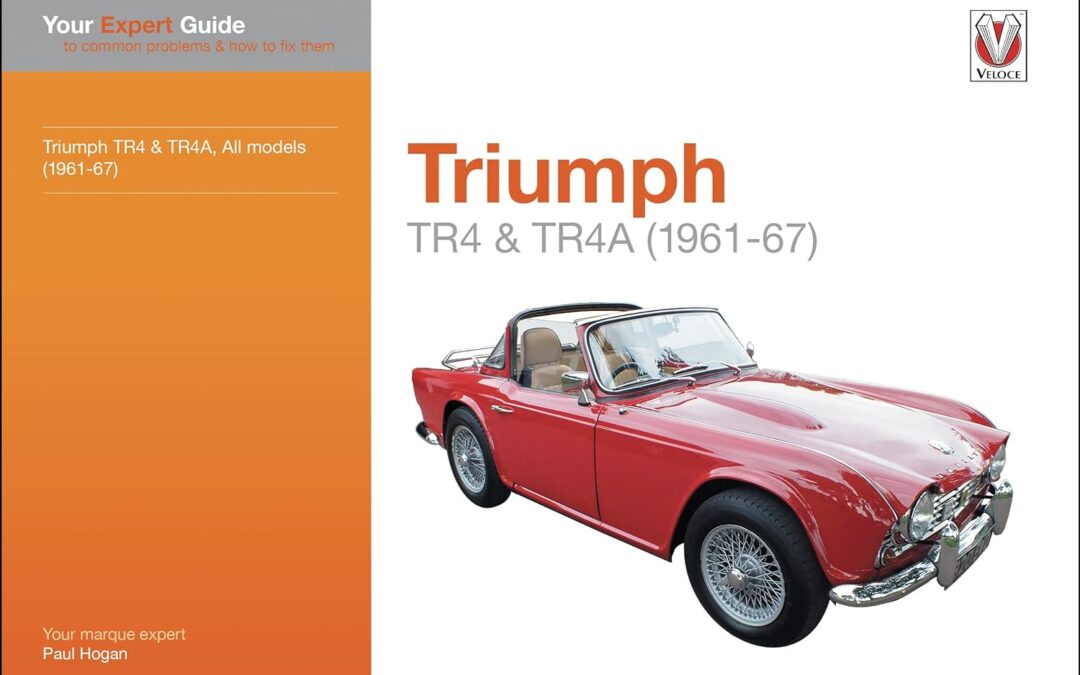
The TR4 represented a new breed of British sports car. Its modern lines, and accessories, such as wind-up windows and face-level ventilation, were a big departure from the earlier TR3 models. While TR4 mechanical parts may not have been new, the introduction of IRS (independent rear suspension) on the TR4A set a new benchmark for sports cars of that era. Performance was solid, if not spectacular, with 109 mph attainable in overdrive top, and these TRs found a ready market in all parts of the world. Now nearly 60 years old, the TR4 and TR4A still attract a huge following worldwide. This book is designed to offer owners and potential owners of these cars an insight to the common problems that can arise and how to fix them, and often making an improvement at the same time. Arranged into easy to follow sections – engine, driveline, suspension, etc – you can see not only where the problems arise, but how to solve them. Information is also provided on owners’ clubs and spares suppliers to help keep your car in good condition and on the road.
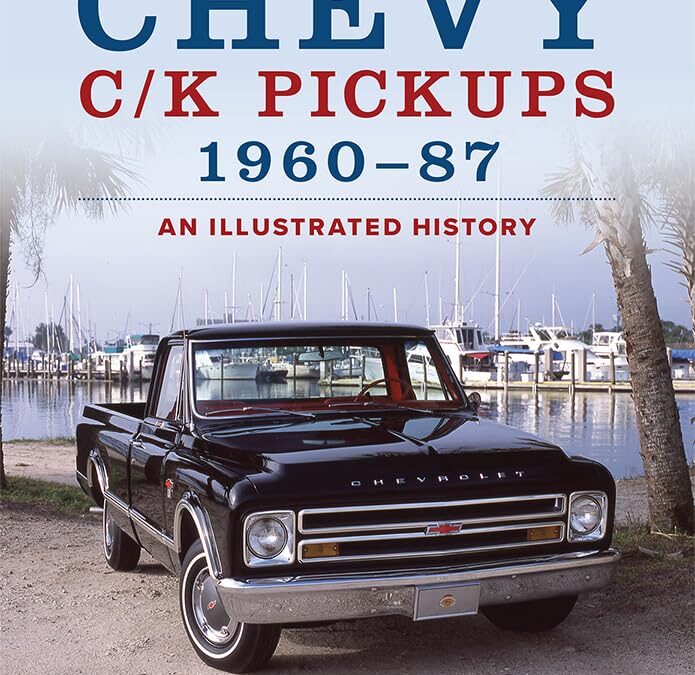
For uninitiated readers—or those too young to recognize a Grateful Dead song—Chevrolet’s C/K coding denotes model year 1960’s two new pickup lines: C for conventional two-wheelers and K for the company’s brawnier 4X4 counterparts. Showcasing many truck market milestone moments, the lengthy C/K tale recounted in this book encompasses three generations: 1960–66, 1967–72, and 1973–87. The first-generation C/K was launched in the fall of 1959 as a 1960 model and featured many firsts—the most significant of these were a drop-center ladder frame that allowed the cab to sit lower than ever before and an independent front suspension that gave the trucks an almost car-like ride. The second-generation C/K debuted in 1967, at which point GM began adding comfort and conveniences to a product that had previously been for dirty work only. The gen-2 trucks have proven extremely popular with collectors thanks to the attractive styling and excellent driveability. The third generation was unveiled in 1973 and produced through the end of 1987 and enjoyed a total restyling. Due to a relatively smooth appearance that encouraged better aerodynamics and higher fuel economy, these trucks were promoted as the “Rounded Line.” The first three generations of Chevy’s popular C/K pickups are the most popular, affordable, and collectible pickups on the market today. High production numbers mean used parts are easy to find, and there is a large aftermarket for reproduction parts.
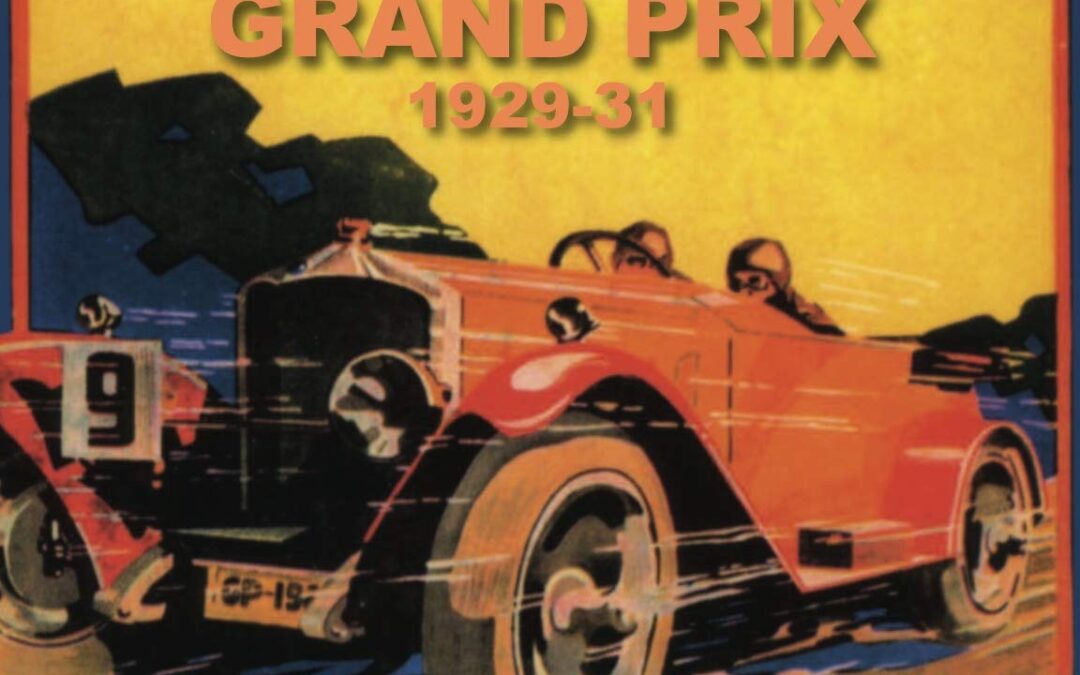
The Irish International Grand Prix 1929-1931, is a truly remarkable exploration of the earliest efforts by the newly-founded Irish Free State to gain recognition as a progressive independent modern country by its international peers.
Bob Montgomery, is the Curator of the Royal Irish Automobile Club (RIAC) Archive, said: “If I think about it, I have been researching and preparing to write this book for a period of some 20 years. I began to note the stories from people who were there and to gather photographs from the event during that time. Some of the stories and many images that can be found in this book have not been seen or heard about since the races took place in the late 1920s and early 1930s.
The book will, I hope do justice to the history of the Phoenix Park and how it’s very existence was so important to the emergence of motorsport in the early part of the last century, which culminated in the three Grand Prix. It’s a book designed to appeal to anyone with an interest in Irish history and not just the motorsport enthusiasts.

Virtually from the moment of its launch in April 1964, the Ford Mustang has been a favorite among road racers. From the Tour de France, to production sports car racing, the SCCA Trans-Am series, regional and national A/Sedan competitions, and international and domestic sedan championships in Great Britain, Europe, Australia, and New Zealand, the Mustang has enjoyed a following like few other models.
Racing Mustangs is a photographic celebration of road racing Mustangs throughout the world. It focuses on production-based cars, rather than the heavily modified tube-frame silhouette machines that began appearing in the late 1970s. Included are images of big-budget factory-supported cars competing in the Trans-Am series, right through to low-buck independents, and cars competing throughout the world.
Using only period images, including countless photos that have never before been published, this is a true photographic history, depicting the global popularity of the Ford Mustang as a road racing car.


The forefather of Alvis, T. G. John & Co. Ltd, was founded in 1919 by Thomas George John and became the Alvis Car & Engineering Company Ltd in December 1921. The company’s first production car, the Alvis 10/30, was introduced in 1920 and helped establish a reputation for quality workmanship and high performance for which Alvis would later become famous. A model line up of both touring and competition cars followed the 10/30 with the most notable being the 12/50, which was extremely competent in both roles. The prewar models were preferred for competition due to their simplicity and ease of tuning. Car production was suspended during World War II as Alvis contributed to the war effort with aero engines, military vehicles, munitions handling mechanization, and medical equipment. After World War II, Alvis produced many fine touring cars until manufacture ceased in 1967. In this book, Clive Taylor, a member of the Alvis Owner Club, in co-operation with the Club celebrates both the centennial year of Alvis cars in 2019 and some of the cars that featured in its fine competition history. With images and information from Alvis owners, this is both an informative book and a wonderful tribute for the company’s centennial.

Preface by Giampaolo Dallara and Mauro Forghieri
Giotto Bizzarrini, engineer from Livorno, was born in 1926. Personal note number one: in 1964 he designed and built the Bizzarrini Grifo 5300 GT, a supercar before its time, in small series, and of indescribable fascination and appeal. This chapter of his long working life would be sufficient for a study in itself, full of incredible stories, testimonies and exciting photographs. All this however is part of the book “Bizzarrini”, which offers much more. The Italian engineering genius, with a creative and genuine character, has actually linked his name to an infinity of projects that have gone down in history. Giotto is the creator of the Ferrari 250 GTO, probably the most celebrated car of all time.
He himself tells how the famous model was born, in a “top secret” department of Ferrari, helped by the mechanic Prampolini and the tinsmith Agnani.
After five years at Ferrari, he worked independently, always with important and attractive projects. In order: a 12-cylinder engine for Lamborghini, collaboration with Scuderia Serenissima (on the creation of the “anti-Ferrari GTO”, the famous berlinetta called the “Breadvan” due to its unusual line), projects for Iso Rivolta (top-level GT car) and for ASA (the famous “Ferrarina”) and the creation of the Bizzarrini brand, which was also involved in high-level racing. After the closure of his company (an excellent technician, he was not cut out for economic aspects, but this is a story within a story), he continued to work on major projects, until 2006. When he turned 80 he retired from the scene.
The book (full of photographic documents but also of “current” images, relating to perfectly restored or preserved cars) tells the entire story of Giotto Bizzarrini, with the testimonies of those who worked with him.
A fitting tribute to a great Italian genius.
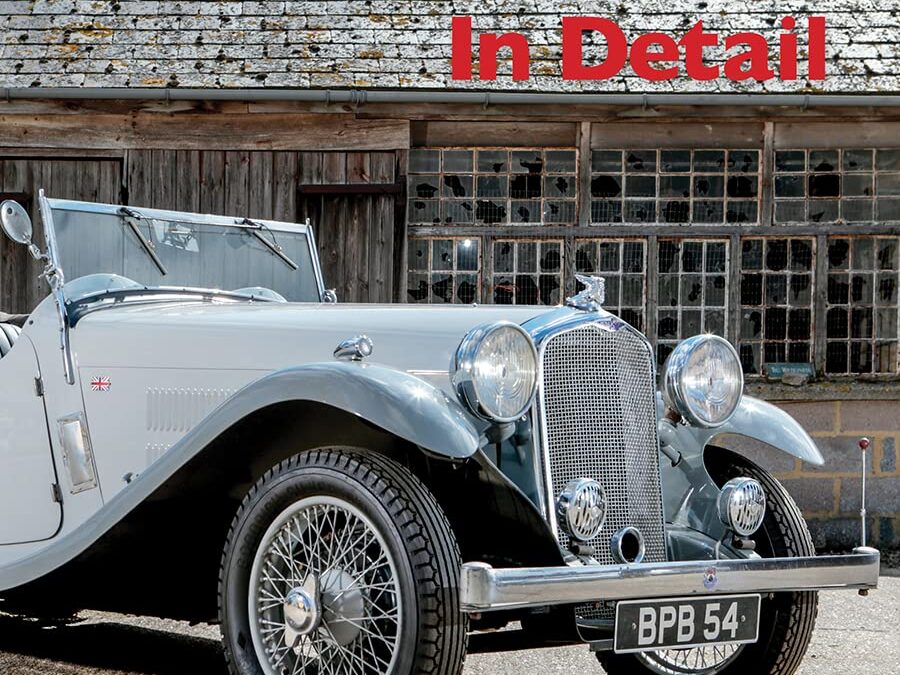
At the start of the 1930s, the Rover Company was in a precarious position. The slowdown in car sales caused by the Recession compounded the problems of an incoherent model-range, and in late 1931 Rover’s bank called for an independent investigation into the company’s business. That investigation called for nothing short of a re-organisation of the Board of Directors. Yet within three years, Rover had established one of the soundest management teams in the business and had completely rationalised its product range. Rovers became the preferred choice of the professional classes: the cars were discreet, exceptionally well made, and thoroughly reliable. Above all, they had become aspirational. Very little has been published about this pivotal period in Rover history, not least because for many years it was widely assumed that the company’s records for the period up to 1940 were lost in the Blitz bombing of its Coventry factory that year. Fortunately, that is not entirely true. Many records certainly were lost, but enough has survived or are recoverable from other contemporary sources to form the basis of this pioneering book. Rovers of the 1930s In Detail extends its comprehensive and detailed coverage back into the late 1920s, when the first of the 1930s models were introduced, and forward into 1947, when the 1930s models that had been revived after the war finally went out of production. The story is a remarkable one, researched and narrated by today’s leading Rover historian, James Taylor. This is a book that will be welcomed by all enthusiasts of this respected marque, and in particular by those who have felt their interest in the models of the 1930s to have been ignored for so long.
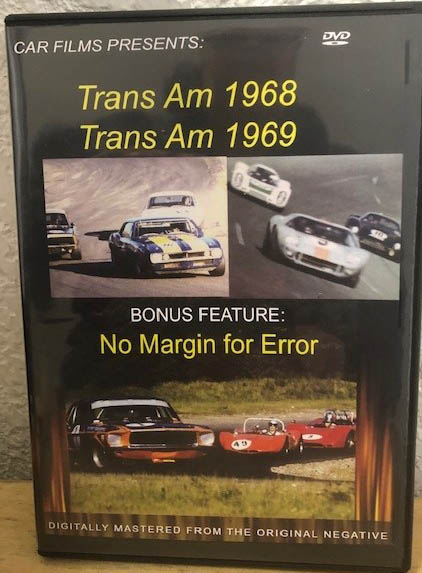
TRANS AM 1968 – 1969
1968 was largely dominated by Mark Donohue driving for Roger Penske. Penske campaigned Camaros through 1969 when he signed with American Motors to race the Javelin in 1970 and 1971. Donohue would chalk up 20 race victories between 1967 and 1970 and three unofficial drivers championships, the third achieved in 1971.
The 1970 Trans Am series is regarded by most racing historians as the high water mark of American road racing. Every “Pony Car” manufacturer was represented with a factory team and top driving talent. Chevrolet had the Chaparral Camaro Z28 team with Jim Hall, Ed Leslie and Vic Elford. Ford’s Bud Moore 302 Boss Mustangs were driven by Parnelli Jones and George Follmer. For Plymouth, the All American Racing Cudas were handled by Dan Gurney and Swede Savage. Sam Posey and occasionally Tony Adamowicz drove Ray Caldwell’s Autodynamics Challenger TA. Jerry Titus had the Pontiac Trans Am. Roger Penske’s Sonoco AMC Javelin team shared Mark Donohue and Peter Revson. The Mercury Cougars were driven by Charlie Rainville, Bruce Jennings and three other drivers in the two races of the 1968 season.
NO MARGIN FOR ERROR
In this 1968 Ford promo film you see why there is “No margin for error” to win. Mustang,(Shelby team, Jerry Titus) and Camaro (Mark Donohue) face off for championship points.
64 cars in 4 categories for the 24 hours of Daytona. Independent Ford GT-40,Porsche long-tail prototypes. Cale Yarborough at Daytona driving Mercury NASCAR, unbelievable ending of the race at 200 MPH.